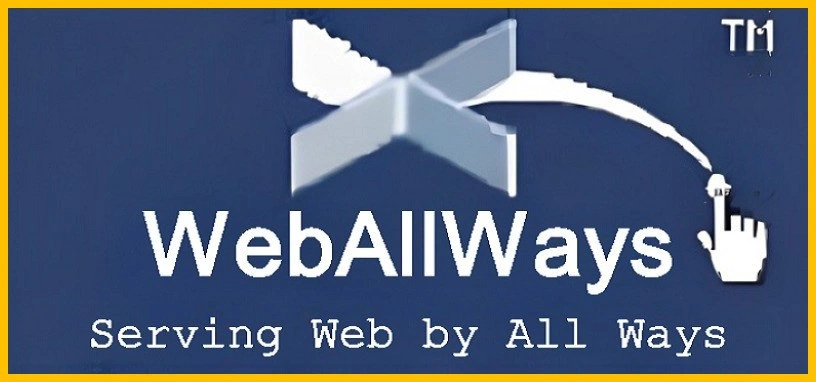
In the fast-paced world of digital marketing, Social Media Optimization (SMO) has emerged as a crucial strategy for businesses aiming to enhance their online presence and engage effectively with their audience. At WebAllWays, we are dedicated to providing insightful answers to the most frequently asked questions about SMO. This comprehensive guide aims to clarify common queries and help you understand how to leverage social media for maximum impact.
What is Social Media Optimization (SMO)?
Social Media Optimization (SMO) is a strategic approach to enhancing your brand’s presence on social media platforms to achieve specific marketing objectives. Unlike Search Engine Optimization (SEO), which focuses on improving visibility on search engines, SMO aims to optimize social media profiles, content, and interactions to drive traffic, increase brand awareness, and foster customer engagement.
Key aspects of SMO include:
- Profile Optimization: Enhancing your social media profiles with relevant keywords, high-quality visuals, and complete information to improve discoverability.
- Content Optimization: Crafting and sharing engaging, high-quality content tailored to your audience’s preferences.
- Engagement Optimization: Developing strategies to boost interaction rates, such as responding to comments, encouraging user-generated content, and fostering community engagement.
- Analytics and Insights: Utilizing social media analytics tools to track performance, measure success, and refine strategies based on data-driven insights.
Why is SMO Important for Businesses?
SMO is vital for businesses due to its multiple benefits, which can significantly impact overall marketing success:
- Enhanced Brand Visibility: By optimizing your social media presence, you increase your chances of being discovered by potential customers who are actively engaging with social media.
- Boosted Engagement: Effective SMO strategies foster higher levels of interaction, helping to build stronger relationships with your audience and improve customer loyalty.
- Increased Web Traffic: Engaging social media profiles and compelling content can drive traffic to your website, contributing to higher conversion rates.
- Influenced Search Engine Rankings: Social signals, such as likes, shares, and comments, can indirectly affect your search engine rankings by enhancing your overall online presence.
- Established Brand Authority: Consistently providing valuable content and engaging with your audience helps establish your brand as an authority in your industry, enhancing credibility and trust.
What are the Key Components of an Effective SMO Strategy?
An effective SMO strategy involves several critical components to maximize its impact:
- Social Media Audit: Conduct a comprehensive assessment of your current social media presence, including profile effectiveness, content performance, and engagement levels.
- Audience Analysis: Identify and understand your target audience’s demographics, interests, and online behaviors to tailor your content and engagement strategies accordingly.
- Content Strategy: Develop a content plan that includes a variety of content types (e.g., posts, images, videos) and aligns with your audience’s preferences and interests.
- Profile Optimization: Ensure that all your social media profiles are fully optimized with accurate information, relevant keywords, and visually appealing elements.
- Engagement Plan: Create a plan for actively engaging with your audience, including responding to comments, participating in discussions, and leveraging user-generated content.
- Analytics and Reporting: Implement tools to monitor and analyze social media performance, track key metrics, and generate reports to assess the effectiveness of your strategies and make necessary adjustments.
Which Social Media Platforms Should I Focus On for SMO?
The choice of social media platforms for your SMO efforts should be based on your business goals, target audience, and industry specifics. Here are some commonly used platforms and their benefits:
- Facebook: Ideal for reaching a diverse audience with a range of content types, including posts, images, videos, and events. Facebook’s advanced targeting options also help in reaching specific demographics.
- Instagram: Best suited for visually-driven content and engaging with a younger demographic. Instagram’s features like Stories, Reels, and IGTV offer opportunities for creative content presentation.
- Twitter: Effective for real-time updates, news sharing, and engaging with followers through short, impactful messages. Twitter is also useful for monitoring trends and participating in industry conversations.
- LinkedIn: Primarily used for B2B marketing, professional networking, and sharing industry insights. LinkedIn is a powerful platform for connecting with other businesses and industry professionals.
- Pinterest: Great for visual content, especially in niches such as fashion, home decor, and lifestyle. Pinterest allows users to discover and save ideas, driving traffic to your website.
- YouTube: The leading platform for video content, offering opportunities for creating educational, promotional, and entertaining videos. YouTube helps in building brand awareness and driving traffic through engaging video content.
How Do I Optimize My Social Media Profiles?
Profile optimization is crucial for ensuring that your social media profiles are effective in attracting and engaging your target audience. Key practices include:
- Complete Profile Information: Fill out all profile fields comprehensively, including your business name, description, contact information, and website URL.
- High-Quality Visuals: Use high-resolution profile and cover images that accurately represent your brand and are visually appealing.
- Incorporate Keywords: Use relevant keywords in your profile descriptions, bios, and posts to improve searchability and relevance.
- Add Links: Include links to your website, blog, or other important pages to drive traffic and provide additional information to your audience.
- Consistent Branding: Maintain uniformity in branding elements such as logos, colors, and messaging across all social media platforms to build a cohesive brand image.
What Types of Content are Suggested to Post on Social Media?
A diverse content strategy helps in maintaining audience interest and engagement. Consider posting the following types of content on your social media profiles:
- Educational Content: Share informative posts, how-to guides, tutorials, and industry insights to provide value and establish authority.
- Promotional Content: Highlight products, services, special offers, and promotions to drive sales and encourage conversions.
- Engaging Content: Post interactive content such as polls, quizzes, and questions to foster audience participation and interaction.
- User-Generated Content: Showcase content created by your followers or customers to build community and enhance trust.
- Visual Content: Utilize images, infographics, and videos to capture attention and communicate messages effectively.
- Behind-the-Scenes Content: Offer glimpses into your company’s culture, processes, and team to humanize your brand and create a personal connection with your audience.
How Can I Increase Engagement on Social Media?
Increasing engagement involves implementing various strategies to encourage active participation from your audience:
- Post Consistently: Maintain a regular posting schedule to keep your audience engaged and informed about your latest updates and offerings.
- Encourage Interaction: Use calls-to-action (CTAs) in your posts to prompt likes, comments, shares, and other forms of engagement.
- Respond to Comments: Actively engage with your audience by responding promptly to comments and messages to build relationships and show appreciation.
- Run Contests and Giveaways: Organize contests and giveaways to incentivize participation and boost engagement rates.
- Utilize Hashtags: Use relevant and trending hashtags to expand the reach of your posts and connect with a broader audience.
- Analyze Performance: Regularly review engagement metrics to understand which content resonates most with your audience and refine your strategy based on these insights.
How To Measure the Success of SMO Efforts?
Measuring the success of your SMO efforts involves tracking various key performance indicators (KPIs) to evaluate effectiveness and make data-driven decisions:
- Engagement Rate: Monitor metrics such as likes, comments, shares, and overall interaction with your content to assess engagement levels.
- Follower Growth: Track changes in the number of followers or fans on your social media profiles to gauge audience growth and interest.
- Traffic Metrics: Measure the volume of traffic driven to your website from social media channels to evaluate the impact of your social media efforts.
- Conversion Rate: Assess how social media interactions contribute to conversions, such as sign-ups, purchases, or downloads.
- Content Performance: Analyze which types of content generate the most engagement and adjust your content strategy accordingly.
- Brand Mentions: Monitor mentions of your brand across social media platforms to gauge brand awareness, sentiment, and overall perception.
What Are Some Common Mistakes to Avoid in SMO?
Avoiding common mistakes can enhance the effectiveness of your SMO strategy and prevent potential pitfalls:
- Inconsistent Posting: Failing to post regularly can lead to decreased engagement and reduced visibility. Be consistent in posting to stay relevant and active on social media platforms.
- Ignoring Analytics: Neglecting to analyze performance data can result in missed opportunities for optimization. Regularly review analytics to make informed adjustments.
- Over-Promoting: Excessive promotional content can alienate your audience. Balance promotional posts with valuable, engaging content to maintain interest.
- Neglecting Interaction: Not responding to comments and messages can damage your brand’s reputation and reduce engagement. Actively engage with your audience to build relationships.
- Using Irrelevant Hashtags: Overusing or misusing hashtags can undermine your credibility and limit reach. Use relevant and targeted hashtags to improve content discoverability.
How Can I Stay Updated with SMO Trends and Best Practices?
Staying updated with the latest SMO trends and best practices is crucial for maintaining an effective social media strategy. Here’s how to stay informed:
- Follow Industry Blogs: Subscribe to reputable digital marketing and social media blogs for the latest news, trends, and insights.
- Attend Webinars and Conferences: Participate in industry webinars, conferences, and events to learn from experts and network with peers.
- Join Professional Groups: Engage with social media and digital marketing communities on platforms like LinkedIn and Facebook to share knowledge and learn from others.
- Experiment and Adapt: Continuously test new strategies, tools, and techniques to stay ahead of changes and adapt your approach based on performance and emerging trends.
Conclusion
Social Media Optimization (SMO) plays a pivotal role in modern digital marketing, offering significant benefits for businesses looking to enhance their online presence and engage with their audience effectively. By understanding and implementing the strategies outlined in this guide, you can optimize your social media efforts, drive meaningful engagement, and achieve your marketing objectives.
At WebAllWays, our team of experts is dedicated to helping businesses navigate the complexities of SMO. If you have further questions or need assistance with starting your social media optimization, don’t hesitate to reach out to us. We’re here to support you in maximizing your social media potential and driving your business toward success.
For users who want to learn about search engine optimization, it is recommended to read SEO FAQ.
